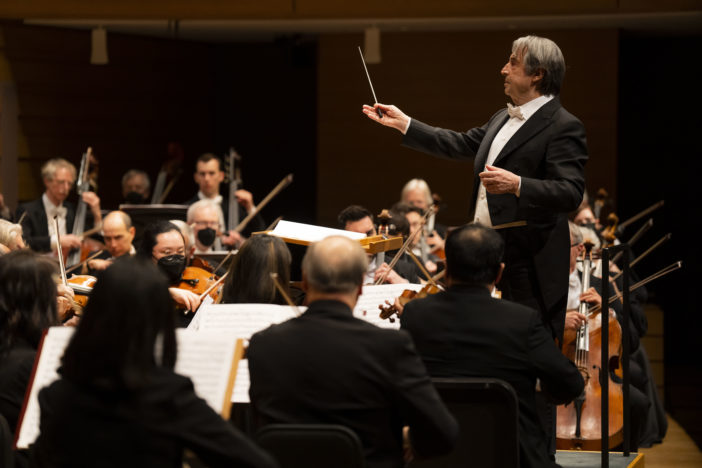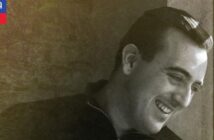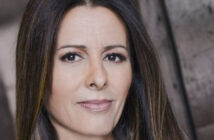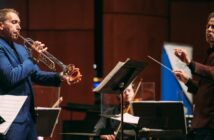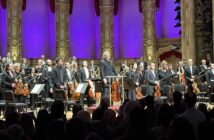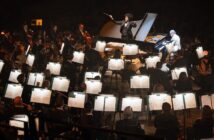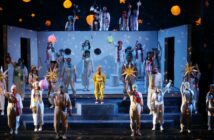Beethoven: Coriolan Overture, Op. 62; Symphony No. 8 in F Major, Op.93; Liadov: The Enchanted Lake, Op. 62; Mussorgsky: Pictures at an Exhibition (Orch. Ravel). Chicago Symphony Orchestra, Riccardo Muti, conductor. Koerner Hall, Feb. 2, 2023.
We are still in the early stages of the new year, and already Toronto has experienced what surely will count as a highlight of the 2023 musical season. I am talking about the visit earlier this week of the Chicago Symphony Orchestra, under its music director Riccardo Muti, for two performances at the acoustically superb Koerner Hall. This tour was Muti’s last as CSO’s head honcho as he’s scheduled to step down. The tour (Jan. 22 -Feb. 2) took the CSO to Arizona, California, Oklahoma, Iowa, and finally Toronto.
The last time this fabled orchestra visited Toronto was over a hundred years ago, in 1914. The CSO is consistently ranked as one of the very top orchestras in the world. A quick check tells me that Gramophone in 2010 ranked it as No. 5 in the world. Toronto’s musical cognoscenti knew a good thing when they see one – the two shows became the hottest tickets in town. When I walked into Koerner Hall last evening for the second of two performances, there was a definite sense of a festive occasion, a palpable feeling of anticipation in the air.
Concert attendance has been slow to recover following the pandemic, so it was gratifying to see a full house, even the choir loft was jammed. It was also a knowledgeable audience, attentive and well behaved, without extraneous applause and very quiet – you could hear a pin drop. Even the coughing was unusually subdued, despite being in the dead of winter. And the audience wasn’t shy with their approvals either, with repeated and well deserved standing ovations at the end – but I’m getting ahead of myself!

© Todd Rosenberg Photography 2023
The program opened with two Beethoven pieces, starting with the Coriolan Overture. Beethoven wasn’t a prolific opera composer, having only penned Fidelio, but he was no stranger to “program music,” instrumental works that tells a story, such as this short work. Coriolan was a subject for Shakespeare, but Beethoven composed it as the overture for an obscure play, Coriolan, by Viennese playwright Heinrich von Collin. The play wasn’t nearly as successful, closing after a short run.
Next on the program was Symphony No. 8, a short work that’s overshadowed by Symphony No. 7, and of course No. 5. No. 8 is a bit of a throwback to the earlier classical style, which may explain its position as one of Beethoven’s “lesser” works. That said, it was a rare opportunity to catch it live. Muti led the CS forces in an exemplary display of what makes this orchestra great – a veritable masterclass on technical unison, incisiveness, quick silver, hairpin twists and turns, but never at the expense of lyricism and a mellow sound.
I should confess that No. 8 would not have been my first choice in a program. By coincidence, I ran into COC Music Director Johannes Debus at intermission, and we exchanged thoughts on this piece. He considers No. 8 to be a real challenge, difficult to bring off despite its deceptive simplicity. His comments made me question my own thinking. Because it isn’t as “showy” and “emotional” as his other works, audiences, me included, tend to regard it as lightweight. I admire it, respect its formalism and intricacy, but it doesn’t touch the heart.
If “heart-touching” was what I was looking for, I got it in spades in the second half. It began softly enough, with The Enchanted Lake by Anatoly Liadov. The quiet, Debussy-like score for strings lives up to its name – enchanting indeed. Muti led the strings in a mesmerizing, almost transcendental reading of the score. It’s sometimes said that it’s easier to play loud than soft. “Quiet as a whisper” really shows the true colours of a great orchestra.
After such a hushed start, Mussorgsky’s Pictures at an Exhibition, orchestrated by Ravel, came as almost a shock. If the Liadov was soothing, Mussorgsky was the other extreme. “Impressive” and “stunning” are apt descriptions of the torrents of sounds coming from the stage, loud but lovely at all times. Brass lovers got their fill with the Mussorgsky, to be sure. As a young student eon ago, it was almost a game to see if I could hear a sour note, an off sound, a blemish of some sort particularly from the brass section. Well, I can assure you that there was none the whole evening.
That said, however wonderful the Mussorgsky was, the sound was so overwhelming that I had to ask if this work performed by a full orchestra maybe more suited to a larger venue than the 1,135 seat Koerner Hall. I was in lower balcony, and the sheer volume of sound coming at me was so incredible that I wonder how the musicians on stage could cope with it. Perhaps a certain degree of hearing loss over time comes with the job…
The CSO played an encore on both evenings. The first night, it was the Intermezzo from Puccini’s Manon Lescaut. True to his operatic roots, Muti chose another opera piece as the encore the second night, the Intermezzo from Umberto Giordano’s Fedora. I confess to being an opera fanatic, so it was icing on the cake for me. As I walked through the front door of Koerner Hall into the frigid night air, I found myself humming the theme of the piece, “Amor ti vieta.”
What a great way to spend an evening!

